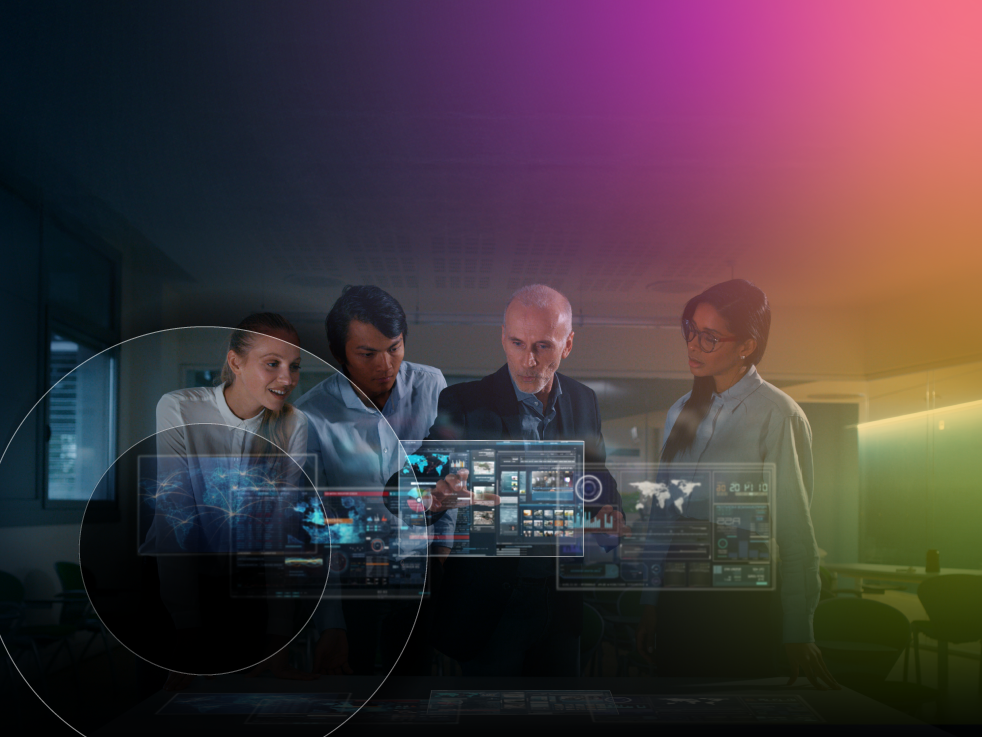NVIDIA GTC 2025 shifts the AI conversation from models to infrastructure:
It's time to move from ideas to execution. As an NVIDIA DGX SuperPOD Specialization Partner, SHI can help you get there.

NVIDIA CEO Jensen Huang opened the GPU Technology Conference (GTC) 2025 with a message few keynote stages would dare lead with: power — not compute, not cost — is the defining challenge for artificial intelligence (AI).
The demand for processing is growing faster than the capacity to deliver it, and power availability now dictates how far and fast organizations can scale.
The roadmap Huang unveiled — from Blackwell Ultra to the new Vera Rubin architecture —maps out exponential growth in compute performance. But that progress comes with serious infrastructure implications. High-density systems are pushing toward 600kW-per-rack envelopes. Photonic networking was introduced to reduce the massive energy draw required to move data between GPUs. Huang’s message wasn’t abstract. AI’s next leap will hinge on how well we design for electricity, not just for speed.
Rethinking what performance really means
Huang didn’t just focus on hardware. He spent time walking through how NVIDIA’s software stack is evolving to extract more value from existing systems. That included updates to CUDA and the release of NVIDIA Dynamo — a full-stack orchestration layer built to allocate GPU resources dynamically and optimize inference workloads.
The logic behind it is that performance doesn’t mean raw speed. It means throughput per watt, per dollar, per task. And it depends on alignment — between hardware, software, and the parameters shaping your models. Dynamo isn’t a plug-and-play fix. It’s a tool for teams that are already thinking carefully about deployment design.
Our team at GTC emphasized this point. Customers are no longer asking how to build an AI environment. They’re asking how to size it correctly, how to adapt it to specific models like large language models (LLMs) or agentic AI, and how to deploy it with confidence that it won’t exceed real-world operational limits.
The shift from prototype to production
GTC wasn’t centered on what AI could do someday. It focused on what’s already happening. NVIDIA’s partnership announcements reflected that shift.
In the automotive space, General Motors is using NVIDIA technologies across the full vehicle lifecycle — from design and simulation to factory robotics and autonomy. In telecom, organizations like T-Mobile and MITRE are deploying NVIDIA’s Ariel platform to improve network efficiency and speed up infrastructure delivery. And in robotics, GROOT N1 and Blue (a humanoid robot introduced at GTC) show how AI is moving off the screen and into physical environments.
These stories matched what we are seeing across sectors. Healthcare organizations are piloting voice-based documentation that applies medical coding in real time. Telcos are optimizing crew and material logistics using AI inference in the field. Enterprise IT teams are automating service ticket management, supply depot inventory, and employee onboarding. These aren’t pilots. They’re operational systems delivering business results.
From exploration to execution
The most important step isn’t the next announcement — it’s the first deployment. And that’s why we built our AI & Cyber Labs.
The labs provide a safe, production-scale environment to test workloads, model behavior, and infrastructure configurations using NVIDIA DGX systems and SuperPOD architecture. It’s where enterprise teams run early-stage retrieval augmented generation (RAG) workflows, benchmark inference costs, and validate deployment paths before committing budget or compute. No theoretical exercises. Just hands-on, measurable results.
Our AI Lifecycle Management Service supports this journey end-to-end. From early ideation through training, tuning, and scaling, it’s built to reduce friction, shrink time-to-value, and ensure every infrastructure decision is backed by evidence.
And we recently achieved status as an NVIDIA DGX SuperPOD Specialization Partner, affirming SHI’s expertise in high-performance AI infrastructure so we can help organizations seamlessly deploy and optimize AI and high-performance computing (HPC) workloads with industry-leading technology.
Agentic systems are the next frontier — and they’re already here
Jensen Huang closed his NVIDIA GTC 2025 keynote with a clear statement: We are headed into a decade defined by machine labor.
Agentic AI will transform the applications we use and the way physical work gets done. Supply chains, data centers, hospitals, telecom networks — everywhere humans make complex, repetitive decisions, machines will assist and then lead.
This future isn’t far off. The tools were on display. The roadmap is public. And organizations now have the clarity to prepare with intention.
Ready to build your AI strategy on a foundation that scales? Contact our team to learn how our NVIDIA-powered solutions and AI & Cyber Labs capabilities can help you turn potential into performance.





